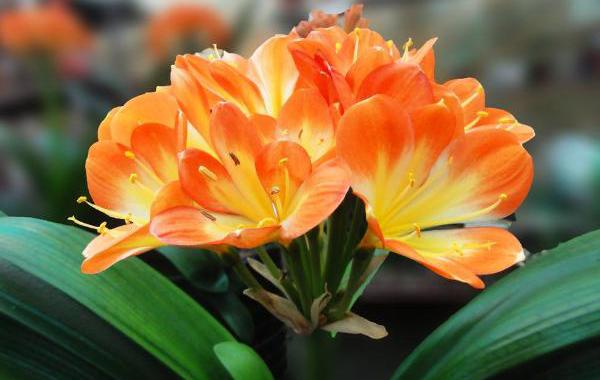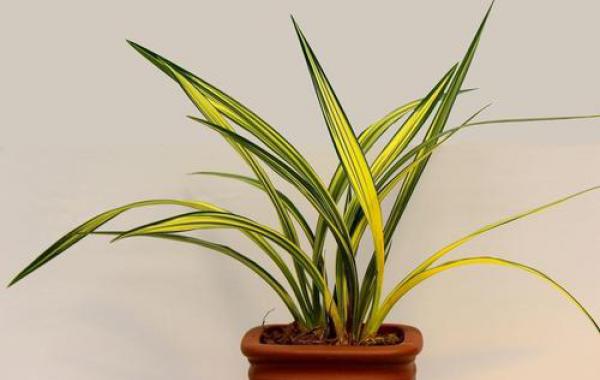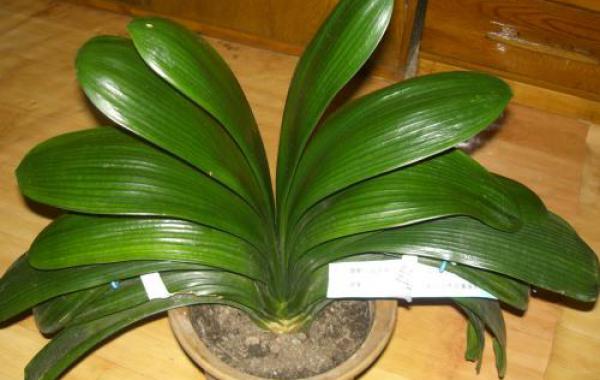How to prevent and cure root rot of Clivia, Clivia how to repair roots

This plant contains a very special alkali, which can be made into a variety of drugs. There are often researchers who study drugs using plants that contain these chemicals, which have been used to treat cancer on the market. In addition, the orchid itself also has a high ornamental value, so people have begun to plant, but the orchid is prone to root rot, let's take a look at the correct treatment.
Control methods of root rot of Cymbidium
1. The way to rescue the rotten root is to pour out the plant, remove the rotten root and cut it off, then coat the wound with charcoal powder or fine furnace ash, or rinse the root with potassium permanganate water and put it in the sun for about 10 minutes. Use ultraviolet light to sterilize, if the root has rotted more than half, the rotten root can be trimmed and cleaned, sterilized and disinfected, it can be put into fine sand to urge the root. If only a few roots are rotten, it can be transplanted into the nutrient soil that has been replaced. Watering is controlled within half a month and can be restored in one or two months.
2. If the fleshy roots have all rotted away, you can cut off all the rotten roots, wash the roots, apply charcoal powder or fine furnace ash, and put them in a fine sand basin to promote the roots. after two or three months, they can also take root and send leaves again.
3. In addition, the rotten leaf soil is used as the culture soil to rescue the rotten root of the gentleman orchid, the effect is also good, the specific method is to wash the fleshy root with clean water twice, then pinch off the rotten root, spread paper cigarette ash on the wound, dry it for two hours, plant it in a coniferous humus basin, put it in a half-shaded place, water it timely, keep the pot soil moist, and grow new roots half a month later.
4. Adjust the amount of fertilizer and water the right amount. The magnolia should not fertilize too much, otherwise it will generate heat and cause root system to burn and rot. Watering should also be appropriate, too much will make the nutrient soil water content is too large, poor permeability, root breathing difficulties, resulting in rotting roots. Be careful not to water the heart of the orchid.
How to trim the root of gentleman orchid
1. Clear the soil
When repairing its roots, it needs to be dug out, and the water should be cut off for about seven days first. When digging it out, you can gently tap on the outside of the basin to better separate the soil from the basin and facilitate it to take it out with the soil. Clean most of the soil from the roots, and then wash off the soil that cannot be cleaned with water until it is clean.
2. Pruning rotten roots
Because its roots are fleshy, although the roots look strong, they are very soft and easy to break. It often grows some rotten roots, and if it is not cleaned in time, it will even affect its life. When trimming its roots, clean up the rotten roots first. if the whole roots are rotten, they need to be cut off. Only part of it is rotten and can be cut off with a sterilized knife.
3. Trim the empty root
If a plant has survived for a long time, after it has grown for many years, its roots are easily empty and there is only a pair of skins. Some of the old roots are dark in color, but very thin, which can not bring nutrients to the leaves very well. on the contrary, they will consume nutrients and become rotten roots, so the empty roots should be cleared away.
4. The skill of root trimming
No matter what kind of root it is, if it can be cleaned directly by hand, do not use utensils, because its roots are very delicate, and the utensils are easy to cause big wounds to it. Using your hands can make the wound smaller and cause less damage to it. If the area of the wound is too large, it is easy to get infected with germs.
How to raise the magnolia after changing the pot
1. Watering: after changing the basin, you need to water thoroughly, every day, for three consecutive days. This is to prevent turbid gas from harming the roots. After three days, normal management can be restored. Because of its fleshy root, it must not accumulate water. You can observe the state of the soil and water it when it is dry or semi-dry.
2. Light: just after the change, you need to put the plant in the shade. This is done in order to reduce the evaporation of water and let it slowly recover its vitality, that is, the so-called "basin". After about ten days, you can slowly increase the light to promote the healthy growth of the plant.
3. Temperature: this needs to be kept in a suitable range all the time. But day and night are different. During the day, it is best to be 15 to 20 degrees; at night, it is best to adjust to 10 to 15 degrees. Temperature has a great impact on plant recovery and normal growth, which needs careful management.
How to make the orchid blossom quickly
1. Pruning
Sometimes some of the basic leaves are too big and too old, absorbing a lot of nutrients from fertilizer and soil, then the differentiation of flower buds
2. Temperature
This kind of plant needs a suitable temperature when it blossoms. If it is too cold, its growth rate will be restrained, so we should make sure that its ambient temperature is appropriate. What we can do is to move the flowerpot to a warmer place and make sure that the place has light and proper temperature so that the plant can function biologically to nurture buds and blossom. We should also pay attention to the ventilation of the environment.
3. Moisture
This kind of plant needs a lot of water when it is still blooming during the flower incubation period, but it should not be watered too much. once too much, the roots of the plant will be anaerobic glycolysis and even decay.
4. Fertilizer
When this kind of plant is pregnant with a bud, we need to apply fertilizer. We can choose bone meal or the offal of fermented fish and bean cake water.
The disease of raising a plant is not terrible, it is terrible that people are not aware of it. Therefore, there is no need to worry about the occurrence of root rot in Cymbidium. After correct treatment, it can no longer be cultivated blindly, but must be maintained according to its growth habits.
Related
- Is the orchid suitable for indoor use? Is it good for the body?
- How to prevent the empty root of orchids?
- What to do after the crab claw orchid is withered?
- Why are the leaves of orchids always yellow? Fertilizing and watering.
- Can the root of the gentleman orchid be saved if it is rotten?
- Diagnosis and treatment of cotton-blowing beetle insects in Cymbidium
- There is a way for a gentleman's orchid to rot.
- What is the most suitable temperature and humidity for the orchid?
- How to raise a gentleman's orchid? Cultivation techniques of Cymbidium
- How to prepare the nutritive soil for the cultivation of Cymbidium



